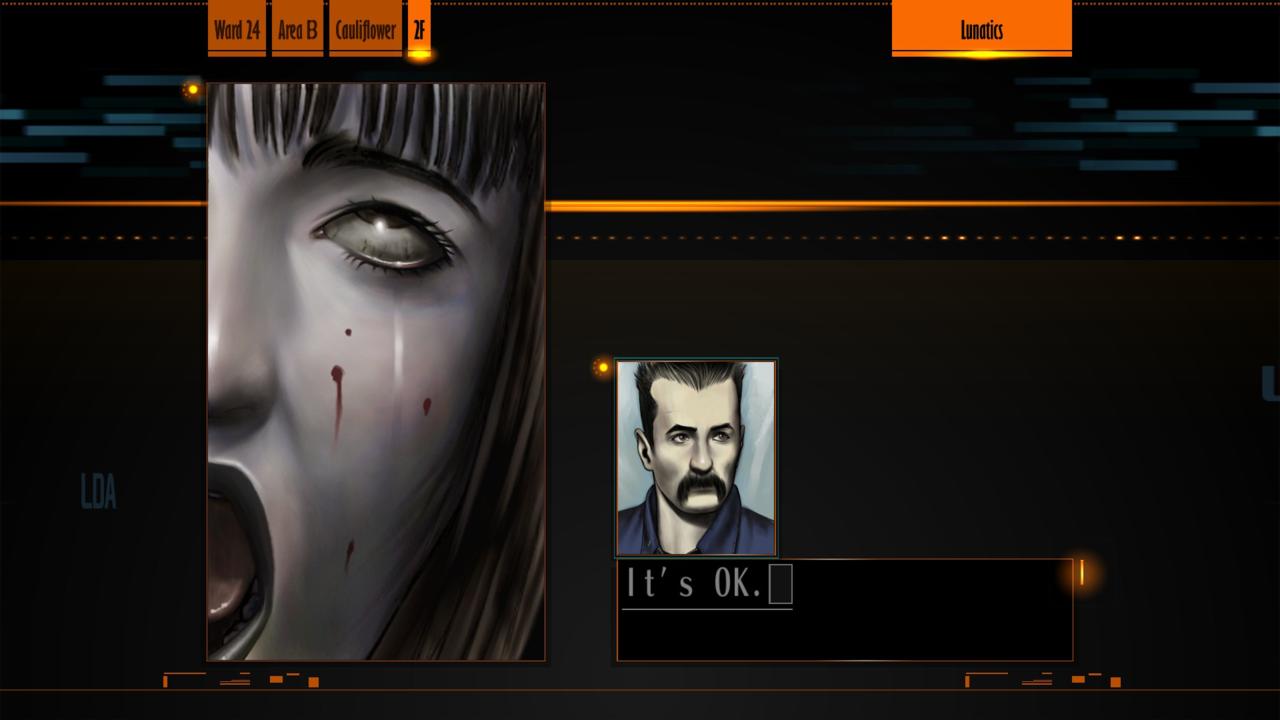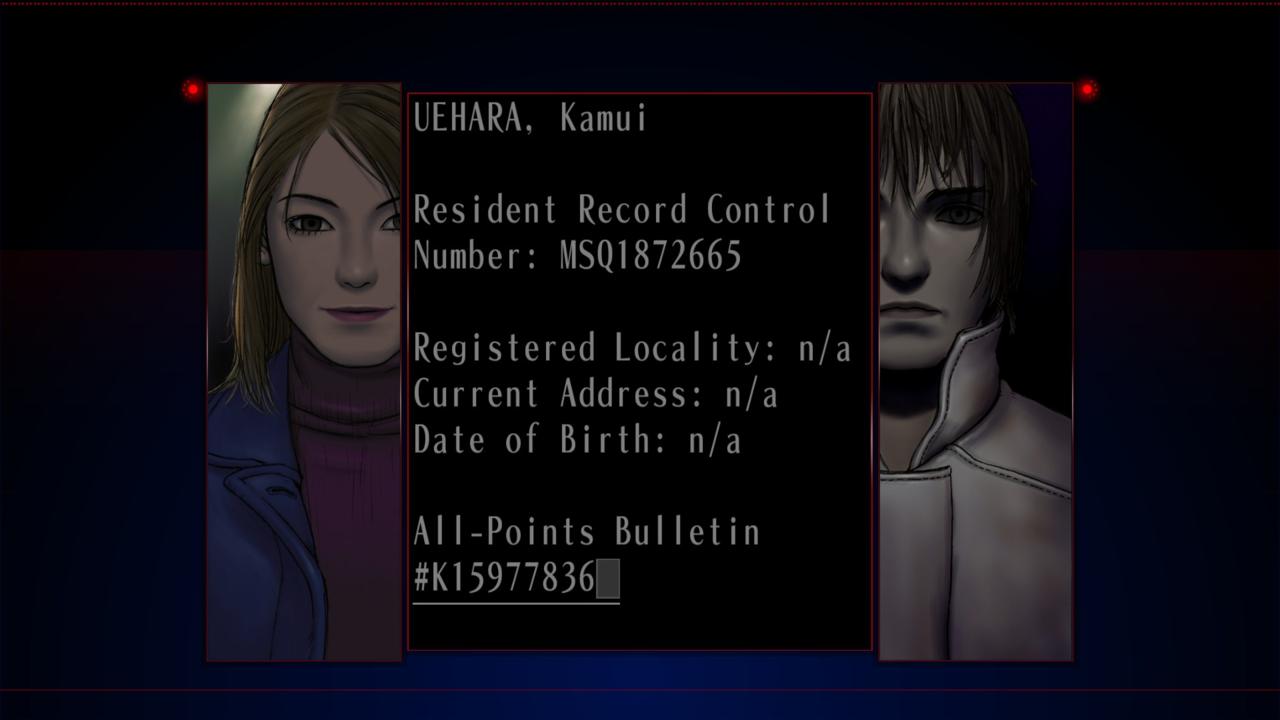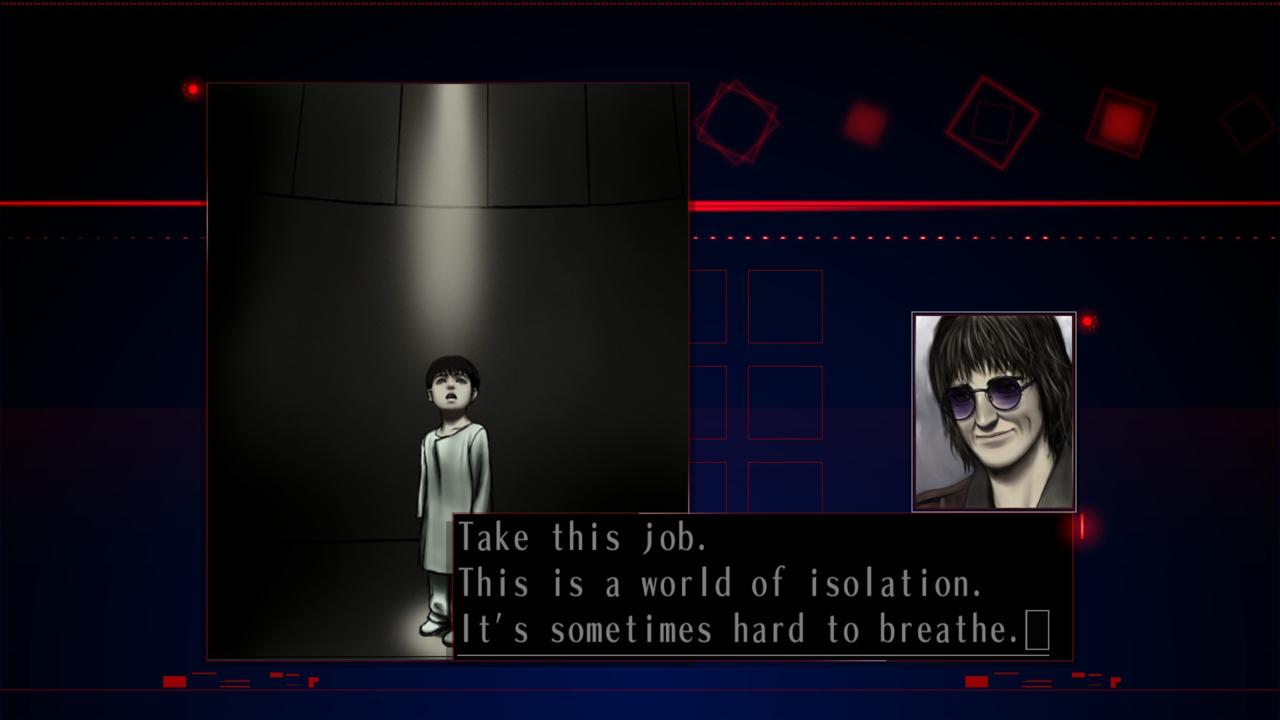If Suda 51 represents one of a scant few auteur game designers, The Silver Case, finally released on Western shores in this remastered form, is basically his student film, a statement of intent and trajectory rather than its own cohesive masterwork. As such, The Silver Case has a few of the elements that fans have come to recognize in a legitimate "Suda 51 Joint", but those elements are obscured by convoluted point-and-click gameplay, and a story that meanders, rants, and rambles getting where it needs to go.
The overarching narrative involves the return of an infamous serial killer named Kamui Uehara to a futuristic Japanese city known as the 24 Wards--and the efforts of a small investigative team to take him down. The game features two scenarios: In the first, Transmitter, you play as a mute detective who is somehow spared by the killer Kamui on the night he first reappears. In the other scenario, Placebo, you take on the role of a freelance reporter whose tale runs parallel to the first mode, as you sort through the mess after the cops are done.

The Silver Case's gameplay uses bog-standard adventure game mechanics. You can walk around your environment from one specified point to another by just turning, looking, and pushing up on the keyboard/gamepad. Once at a specific point, noted with a technicolor star indicator, you can use the Check option to get more details or activate the next scene. Some moments and puzzles require special tools in the Implements menu, but these moments are rare. For the most part, you're basically just following the dialogue around a room to get to the next scene. It's always when it's least expected or necessary that the game finally cottons to the fact that you might want to play it, and then it has the player knocking on doors, asking witnesses questions, wandering aimlessly around an environment to find the trigger for the next scene, or, in some cases, solving tricky little ciphers to open a door. Still, you can go long stretches without ever getting a button tap in. Some scenes literally have the protagonist walk two steps ahead, then trigger a long dialogue that may not let up for 10 minutes.
The game is framed like episodes of a television show, with each taking maybe an hour and a half to two hours to complete each--assuming you don't get tripped up by an obtuse puzzle or have to re-check every door and contact point looking for the one action prompt you missed; or assuming you don’t get confused by the controls altogether, where just getting to the point of moving forward through the first-person space is a three-step process instead of just pressing forward. The same goes for looking up, down, investigating an object, or talking to someone in the room, all which involve an overly convoluted, clunky menu.
Even if you gain some sort of finesse with the controls, the game's length remains a sticking point due to some terrible pacing and difficulty parsing new story details. Bad controls in a '90s point-and-click adventure can be tolerated if the stories are well paced and brilliantly executed, but each Silver Case episode is padded with filler. Every detective seems to have a philosophical ramble on every small decision they have to make in the field, and none of these characters are interesting or layered enough to make this stuff compelling. Most fall into the category of thinking that their job is dumb, and anybody putting in effort is a loser.

This, of course, is one of the hallmarks of Suda 51's work: apathetic heroes treating a completely insane, terrifying scenario as a nuisance keeping them from a good nap. The main issue with The Silver Case, however, is that--some bizarre minor details aside--the scenarios here are grounded in reality more than anything Suda made afterward. The usual fuzzy logic and unnatural human interactions that add to the “playable dreamscape” feeling of most of his games is an ill fit here. These are plausible scenarios, worked on by implausible characters.
When the game does get to the business of actually presenting the gory details of each case, it fares better. The overarching narrative of the Kamui case is the glowing red seed of abstract madness that has come to define Suda's work, and the horrors presented whenever the plot progresses are chilling and effective. Some of the other scenarios, including a hilariously dated (yet sadly, still prescient) case based around cyberbullying are just dead-weight slogs to get through. Others, however, such as a case that revolves around a man held for ransom while his businesses are completely dismantled by a mute terrorist, are breezy and captivating-- that one employs a beautiful black-and-white noir-ish art style.

The Placebo scenario as a whole gets some points for having an active, talkative, interesting protagonist to tag along with. Even the good cases are sometimes hard to get a solid grasp on, however, and the fact that so many different art styles--CG, anime, live action, still manga panels--are employed willy-nilly to tell the tales doesn't help. While some of the varieties in art direction are compelling, there are often too many to get a firm grasp on what the game aims for as a whole. For this remaster, Suda enlisted his longtime collaborator Akira Yamaoka to help remix the score, and while the music by itself is a fun, jazzy throwback most of the time, it, too, flies in the face of whatever of import is happening onscreen.
More than anything, The Silver Case is more interesting in the context of Suda 51's career than it is as a standalone game. It shows an ambitious floating of new ideas past the player, and much of how the story is presented would later find a more welcome home when surrounded by much weirder, wilder worlds. Stranded in the framework of a police procedural, however, the game fails its best concepts. The Silver Case's unusual take on human conversations, its indecision about whether it wants to be just a visual novel or an adventure game where the player is a full participant, and its lack of focus in tying up any sort of cohesive plot, all add up to a mess of a game.




